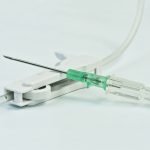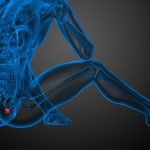Low Concentrations of Omega-3 Fatty Acids May Predispose for Preterm Birth
Node Smith, ND
A recent study from Harvard T.H. chan School of Public Health and Statens Serum Institut in Copenhagen, shows strong evidence that lower plasma levels of long chain omega-3 fatty acids in pregnant mothers during the first and second trimester may elevate risk for premature birth.1 When compared to women with higher levels of omega-3 fatty acids, low levels of eicosapentaenoic acid and docosahexaenoic acid (EPA+DHA) were seen to be a strong risk factor for preterm birth.
An instance where food sources of vital nutrients may need to be questioned
This may be an instance where food sources of vital nutrients need to be questioned, and perhaps supplementation considered. Pregnant women are warned against eating fish altogether, for concern of the mercury content, however the long chain fatty acids in fish could be beneficial to fetal development, and maternal health. Last year the U.S. Food and Drug Administration and Environmental Protection Agency published guidelines to help consumers know which types of fish were best to consume and avoid during pregnancy. And still, some individuals may opt for supplementation over fish.
Preterm birth a major concern for neonatal death
Preterm birth is a major concern for neonatal death, and is also associated with birth defects such as cognitive deficiencies as well as cardiac and metabolic problems. For quite a while, it has been thought that high consumption of EPA+DHA helped mitigate preterm births, however findings have been inconsistent.
Researchers looked at data from the Danish National Birth Cohort
During this study, researchers looked at data from the Danish National Birth Cohort, a national study that follows 96,000 children in Denmark using questionnaires and registries. Analysis of 376 women who gave birth very prematurely (before 34 weeks) and 348 women who had full-term births. Blood samples were taken during the first and second trimesters.
Blood samples
Blood samples showed that those women with the lowest concentration of EPA+DHA -1.6% or less of total plasma fatty acids – were at ten times greater risk of early preterm birth when compared to those women in the three highest quintiles – 1.8% or higher.
Authors acknowledgements
The authors did acknowledge that broad generalizations may be difficult, because the study was conducted in Denmark, where the rate of preterm births is very low. Also, the study did not take into account other variations in diet.
Comment on the study from co-author Jeremy Furtado, senior research scientist at Harvard Chan School:
“An effect of this magnitude is rare, but the precision of the estimate is tight, which supports the reliability these findings. It will be important to replicate these findings in other populations, but the results of this study certainly suggest that assessment of plasma EPA+DHA status in women has the potential to be used in the future to help predict women’s risk.”
Source:
- Olsen, S.F. et al.Plasma Concentrations of Long Chain N-3 Fatty Acids in Early and Mid-Pregnancy and Risk of Early Preterm Birth. EBioMedicine.
Image Copyright: <a href=’https://www.123rf.com/profile_ondrooo’>ondrooo / 123RF Stock Photo</a>
 Node Smith, ND, is a naturopathic physician in Portland, OR and associate editor for NDNR. He has been instrumental in maintaining a firm connection to the philosophy and heritage of naturopathic medicine among the next generation of docs. He helped found the first multi-generational experiential retreat, which brings elders, alumni, and students together for a weekend camp-out where naturopathic medicine and medical philosophy are experienced in nature. Four years ago he helped found the non-profit, Association for Naturopathic ReVitalization (ANR), for which he serves as the board chairman. ANR has a mission to inspire health practitioners to embody the naturopathic principles through experiential education. Node also has a firm belief that the next era of naturopathic medicine will see a resurgence of in-patient facilities which use fasting, earthing, hydrotherapy and homeopathy to bring people back from chronic diseases of modern living; he is involved in numerous conversations and projects to bring about this vision.
Node Smith, ND, is a naturopathic physician in Portland, OR and associate editor for NDNR. He has been instrumental in maintaining a firm connection to the philosophy and heritage of naturopathic medicine among the next generation of docs. He helped found the first multi-generational experiential retreat, which brings elders, alumni, and students together for a weekend camp-out where naturopathic medicine and medical philosophy are experienced in nature. Four years ago he helped found the non-profit, Association for Naturopathic ReVitalization (ANR), for which he serves as the board chairman. ANR has a mission to inspire health practitioners to embody the naturopathic principles through experiential education. Node also has a firm belief that the next era of naturopathic medicine will see a resurgence of in-patient facilities which use fasting, earthing, hydrotherapy and homeopathy to bring people back from chronic diseases of modern living; he is involved in numerous conversations and projects to bring about this vision.










